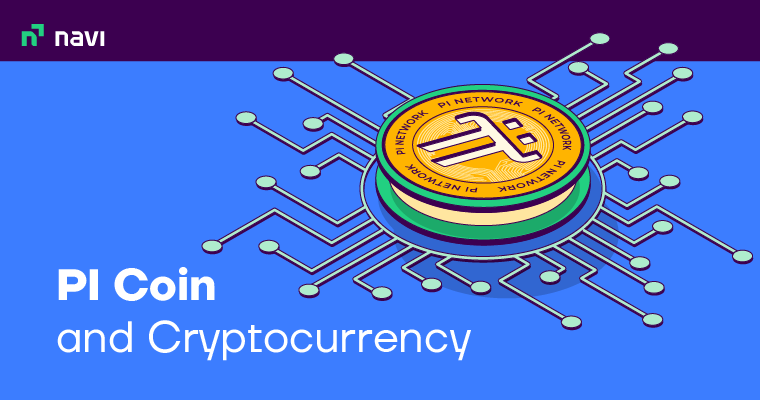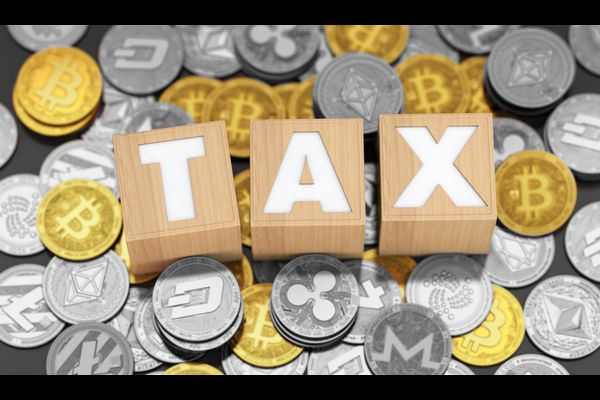Cryptocurrency Trading: Process, Different Styles And Trading Strategies

Over the past decade, cryptocurrency trading has gained increased momentum. These digital currencies operate on blockchain technology and can produce significant returns. However, to successfully trade in these digital currencies, you need to have proper knowledge regarding crypto trading. It will help you manage your investment and gain optimum returns systematically.
Go through the following sections to know how to trade cryptocurrency and its associated strategies.
What is Cryptocurrency Trading?
When you buy or sell cryptos to earn returns or profit, you have to participate in crypto trading. The type of transaction you perform on a crypto exchange determines the type of crypto trading manner. Cryptocurrency trading deals with the speculation of price movements of cryptos via the CFD (contract for difference) trading account. It also includes selling and buying coins through a crypto exchange.
- CFD trading
They are derivatives which allow you to predict price movements in cryptos without owning the underlying coins. Subsequently, you can buy long if you think that the coin will grow in value and sell short if the coin is bound to lose value.
- Purchasing and selling cryptos
Purchasing and selling cryptocurrencies via a crypto exchange also forms a part of cryptocurrency trading. That said, you will have to create an exchange account and enter the asset’s full value to open a position. Following this, you can store the crypto in your wallet until you are ready to sell them.
How to Trade Cryptocurrency?
Various approaches exist predominantly regarding how to trade cryptocurrency in India. The entire process typically entails three steps, including:
Step 1: Choose a platform
The first step to starting crypto trading is to choose a relevant platform. Typically, you can choose between a broker or a crypto exchange.
Step 2: Fund your account
After choosing the platform, the next step is to fund your account. Most exchange platforms allow individuals to buy cryptos using fiat currencies. However, this might vary. Some platforms also allow wire and bank transfers.
Step 3: Place your order
Upon following the above-mentioned steps, you can place your order via the broker or crypto exchange app. If you want to buy cryptocurrencies, you can do so by choosing the ‘buy’ option, selecting the order type, entering the amount of crypto and then confirming the order. You have to follow the same procedure to sell orders.
Also Read: How To Buy Cryptocurrency In India – A Step-By-Step Guide
What are the Different Styles of Crypto Trading?
If you want to trade cryptocurrency successfully, you need to know that there is no one defined way to conduct the process. Instead, there are many style approaches pertaining to cryptocurrency trading. Find them below:
1. Scalping
With scalping, your goal should include making small profits at constant intervals. This strategy involves utilising increased trading volumes to generate profit. Although the risk is involved in this process, you can take care of possible headwinds carefully. To incorporate this strategy, you need to analyse the cryptocurrency, its volume, past trends and entry and exit the trade within minutes or a few seconds.
2. Day trading
As the name suggests, this strategy involves trading over a day. With day trading, you may enter and exit positions within a day. It includes a dynamic market analysis, which assists in determining when to drop an asset. Note that day traders are extremely devoted and should have the leisure to assess the market throughout the day.
3. Swing trading
Swing trading involves a short-term trade which is tied to a target. Unlike scalpers, who can make last-minute decisions, swing traders remain grounded. That said, they don’t decide as per the changes in the market. Rather, they wait to analyse their long-term goals beforehand. They rely heavily on technical analysis and observe the past and current crypto behaviour to decide its future price.
4. Position trading
Position trading works similar to swing trading, but it is more in-depth. To add this trading strategy, you must study the crypto market beforehand, keeping in mind the long-term gains. Note that position traders do not follow or study the charts and trends as other traders generally do. Instead, they assess the crypto’s white paper. Following this, they study the market performance of other coins and various other market factors to make decisions.
3 Cryptocurrency Trading Strategies You Need to Know
Although cryptos are in high demand currently, they are speculative assets. This means that they carry high risks that traders must know about. Thus, when it comes to crypto trading, you need to incorporate a few essential strategies to minimise the overall risk.
Here are a few points describing the strategies you can include while you trade in crypto:
- Track volatility
Since cryptos are still emerging, they often fall prey to speculations, resulting in extreme volatility. While significant price movements can bring in risk, daily volatility in crypto could be an opportunity to make gains. However, you should assess your risk appetite beforehand and follow the market trends by following historical charts and blockchain updates.
- Diversify your portfolio
One of the essential strategies for cryptocurrency trading includes creating a diversified portfolio. Investing in various coins will help you minimise your overall trading risk. In addition, it will also allow you to relate between speculative and stable assets. You can also diversify your investment via different crypto exchanges, as not all exchanges have the same set of coins.
- Utilise dollar-cost averaging
This strategy includes investing a fixed sum regularly rather than investing the entire amount at once. While incorporating this method, you have to invest the same corpus during bear and bull markets. Buying coins when the market down allows you to accumulate them at a cheaper price, and the dollar-cost averaging can help you attain long-term wealth without having to time the market. - Avoid deciding as per current hype
A major rule to follow for cryptocurrency trading for beginners is to not rely on social media hype or news or any trends of a particular crypto. Note that cryptocurrencies are a trending topic, and several speculations about them exist on such platforms. However, you should always base your decisions on conducting thorough market research.
Also Read: What Is Crypto Exchange And How To Choose The Best One
How to make a Trading Plan?
Here’s a step-by-step guide to help you know how to trade cryptocurrency in India, which will assist you in making optimum gains in the long run:
- Step 1: Assess your goals, approach and available time
Before starting off, consider assessing your goals in a realistic time frame. Note that within the available trading window, you will have to choose a window as per your requirement. Thus, know your daily schedule and assign the trading time depending on the time you have in hand during a particular day. This will confirm that you stick with a strict routine and stay motivated.
- Step 2: Know which analytics work well for you
Locate the analytics that helps you understand the market in a better way. You can use comparative analytics, such as transaction count, on-chain metrics and more from reliable sources. Following this, note the methodology that works the best for you.
- Step 3: Incorporate a trading style
Know about the different trading styles and determine your pick among them. Note that the trading style you choose must be practical with your investment goals and risk appetite. Additionally, consider keeping the general trading guidelines in mind while incorporating a crypto trading style.
- Step 4: Know your holding period
Know that every trading strategy requires a different holding period. For instance, scalpers hold assets for minutes or seconds, and day traders hold them for a single day. Thus, match your trading style with the holding period, and determine what works best for you.
- Step 5: Devise risk management strategy
After following the steps mentioned above, consider determining the percentage of investment you are willing to put at risk. Develop rules to assign a risk management strategy to yourself. Additionally, try to minimise your overall losses. Remember that your risk-taking ability changes as per the market conditions and your portfolio.
Final Word
Individuals are often attracted to cryptocurrency trading because of the potential returns these coins provide. However, failing to know the basics of the trading process can result in significant losses. Thus, consider knowing all about the trading strategies and draft an effective plan before taking this investment avenue.
FAQs on Crypto Trading
Ans: Crypto exchanges are a platform that allows individuals to buy and sell cryptocurrencies. You can sign up with these platforms to trade one coin for another or buy crypto using regular or fiat currency. These exchanges also reflect the current market price of cryptocurrencies.
Ans: A few other ways through which you can trade in cryptocurrencies include payment services, such as PayPal, Venmo and others. Apart from these, there are a few other investment vehicles, including Bitcoin mutual funds, Bitcoin trusts and blockchain stocks or ETFs.
Ans: There are two types of wallets in which you can store your cryptocurrencies. These include hot and cold wallets. Hot wallets use online software to secure the private keys of assets. Meanwhile, cold wallets use electronic devices to secure your private keys.
Ans: You can purchase a variety of products from e-commerce sites via cryptocurrency. These include luxury goods, cars from high-end dealers, goods from various technology websites and more. Additionally, many online platforms offer vouchers that you can purchase through crypto.
Ans: Technical analysis is the method through which you analyse previous market data. This analysis particularly includes volume and price to predict price action. Conducting technical analysis before indulging in crypto trading can help you generate optimum returns. There are a variety of technical analysis indicators.
Ans: The crypto market moves as per demand and supply. However, since these virtual currencies are decentralised, they remain unaffected by various political and economical concerns. That said, the following factors affect crypto movements:
– Supply
– Market cap
– Media portrayal
– Major events and more
Ans: The spread is particularly the difference between the buy and sell prices of crypto. Like most financial markets, upon opening a position in the crypto market, you will get two prices. Now, if you wish to open a long position, you have to conduct trading at the buying price. Otherwise, for a short position, you have to buy at the selling price.
Ans: The primary difference between a cryptocurrency and digital currency is that the former is decentralised. Meaning, that no authority or body issues or backs this kind of virtual currency. They run across computer networks and work on blockchain technology. Meanwhile, digital currencies possess similar characteristics as that of regular currencies. However, they exist in the digital world and are issued by a body or authority.
Disclaimer: Crypto products and NFTs are unregulated and can be highly risky. There may be no regulatory recourse for any loss from such transactions.
This article has been prepared on the basis of internal data, publicly available information and other sources believed to be reliable. The information contained in this article is for general purposes only and not a complete disclosure of every material fact. It should not be construed as investment advice to any party. The article does not warrant the completeness or accuracy of the information, and disclaims all liabilities, losses and damages arising out of the use of this information. Readers shall be fully liable/responsible for any decision taken on the basis of this article.
Before you go…
Want to put your savings into action and kick-start your investment journey ? But don’t have time to do research. Invest now with Navi Nifty 50 Index Fund, sit back, and earn from the top 50 companies.
*Mutual Fund investments are subject to market risks, read all scheme-related documents carefully.

Customer’s Feedback
No comments found.Top 10 Cryptocurrencies to Invest In 2023 – Best Cryptocurrencies In India
Cryptocurrency is a digital currency which can be used to purchase goods and services without the u... Read More »8 Top Crypto Exchanges in India – Best Crypto Exchanges 2023
Crypto assets are attracting more and more traders to explore the possibilities of their rising mar... Read More »What is Crypto Airdrop – Its Types, Taxation, Benefits and How Does it Work?
Crypto Airdrop is among one of the key strategies that have grown extremely popular since 2017 in t... Read More »What is Pi Cryptocurrency: Network, Value, Price and Future
The Pi Coin cryptocurrency has made the mining of digital currencies accessible for crypto enthusia... Read More »What Is Tax On Crypto In India And How It Is Calculated
Cryptocurrencies are decentralised digital currencies or assets based on blockchain technology, whi... Read More »What Is Internet Computer Protocol (ICP) – Its Price, Investment Benefits And Uses
The ICP crypto is the native token of the ICP Blockchain network, which is used to reward the users... Read More »What Is A Crypto Mining Rig – Its Setup, Types and How To Build One
A Crypto mining rig is a customised personal computer. It features all the essential elements of a ... Read More »Polygon(MATIC): How Does It Work, Benefits and Price Prediction
Polygon (MATIC) is a scaling solution for Ethereum, and MATIC is the name of the token that powers ... Read More »What is GALA Crypto: Review, Benefits and How to Buy GALA Coins?
GALA is an Ethereum-based cryptocurrency that powers Gala Games, a play-to-earn gaming platform. Th... Read More »What is Bullish Engulfing Pattern – its Importance in Trading
Trading in stocks is challenging. That’s why traders use several technical analysis tools, like c... Read More »What is 1inch Crypto – How Does it Work and How to Buy it?
The 1inch protocol is a decentralised exchange (dex) aggregator. Dex is a peer-to-peer (buyers and ... Read More »What is Staking Crypto and How does It Work?
Staking crypto means pledging your cryptocurrencies to the blockchain network to confirm trans... Read More »Top 10 Chit Fund Schemes in India in 2023
Chit funds are one of the most popular return-generating saving schemes in India. It is a financial... Read More »10 Best Gold ETFs in India to Invest in April 2023
Gold ETFs or Gold Exchange Traded Funds are passively managed funds that track the price of physica... Read More »10 Best Demat Accounts in India for Beginners in 2023
Creation of Demat accounts revolutionised the way trades were conducted at the stock exchanges. It... Read More »20 Best Index Funds to Invest in India in April 2023
What is an Index Fund? An index fund is a type of mutual fund or exchange-traded fund (ETF) that... Read More »Best Arbitrage Mutual Funds to Invest in India in April 2023
Arbitrage funds are hybrid mutual fund schemes that aim to make low-risk profits by buying and sell... Read More »10 Best SIP Plans in India to Invest in April 2023
What is SIP? SIP or Systematic Investment Plan is a method of investing a fixed amount in ... Read More »10 Best Corporate Bond Funds in India to Invest in April 2023
Corporate bond funds are debt funds that invest at least 80% of the investment corpus in companies ... Read More »10 Best Bank for Savings Account in India [Highest Interest Rate 2023]
Savings account is a type of financial instrument offered by several banks. It lets you safely depo... Read More »




















